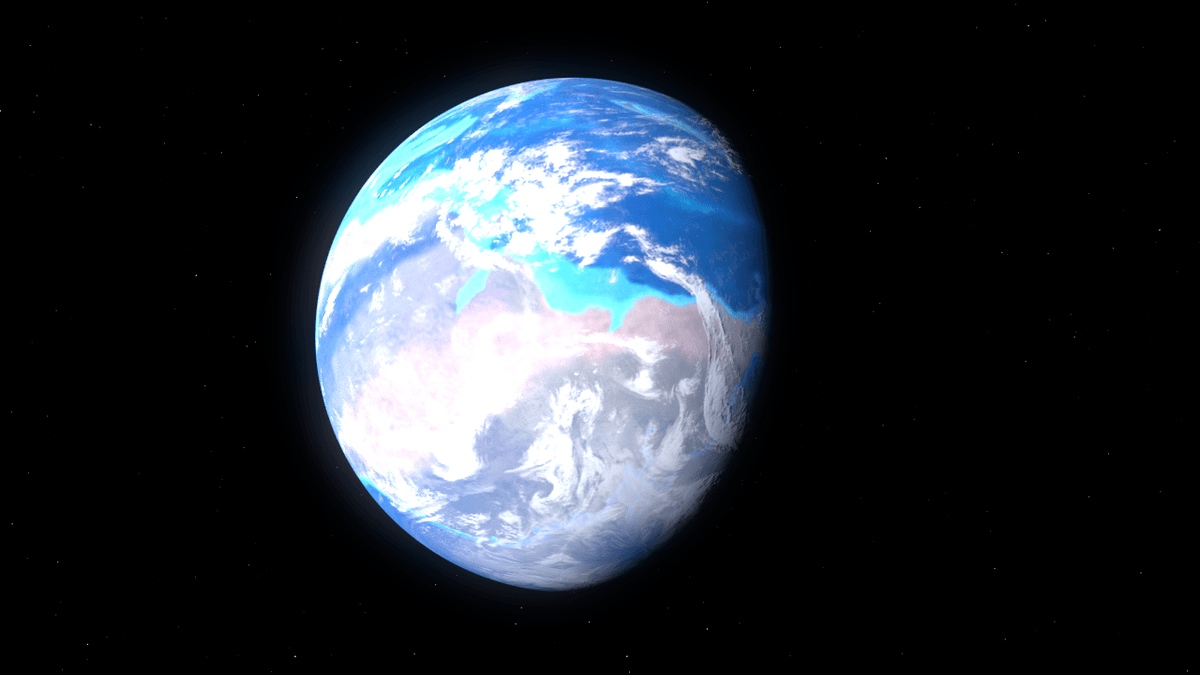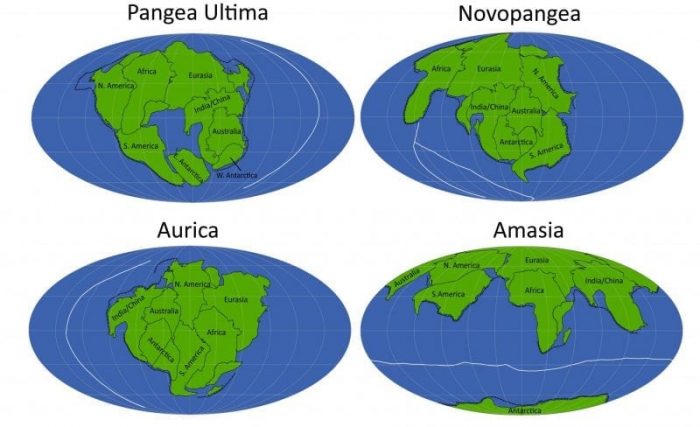
Scientists believe that several supercontinents may have existed in the past, the last of which was Pangea. A supercontinent is an aggregation of all, or almost all, the continental masses on Earth, and the cyclical aggregation and breakup of supercontinents is called the supercontinent cycle.
It is, therefore, foreseeable that a new supercontinent will form sometime into the future. Using the rules of plate tectonics, we can attempt to predict when and where this new continent will form and what it will look like. This cycle takes place over several hundred million years; Pangea started breaking up 180 million years ago, and it is predicted the next supercontinent will not form until at least 200 million years into the future.
We know that the break-up of Pangea lead to the formation of the Atlantic Ocean, with the Americas drifting apart from Africa and Europe. This widening of the Atlantic is still ongoing today. However, to form the next supercontinent, one of the major oceans on Earth will have to close. The question is, which one will it be? Will the Americas travel around the globe, closing the Pacific and colliding with East Asia, or will the current motions be reversed so that the Americas are brought back to the old continent, closing the Atlantic? Are these the only viable options?
In the paper “Back to the future: Testing different scenarios for the next Supercontinent gathering,” we explored the four proposed scenarios for the next supercontinent gathering. The aim of the study was to increase our understanding of how Earth may evolve, from a tectonic viewpoint, over the next few hundred million years, and to make sure that all four scenarios had the same amount of information available to the science community.

Credit: Hannah S. Davies
The first scenario we explored is called Pangea Ultima. It predicts that the Atlantic will stop opening and start to close, pulling Europe and Africa and the Americas back together again. This would lead to a reformation of the previous supercontinent, Pangea – hence its name: Pangea Ultima. This scenario is based on the classical concept that oceans open and close in a cyclical way. Today, some scientists believe that it is the Atlantic’s fate to close because new subduction zones, where one tectonic plate sinks beneath another, are developing within the basin and subduction is the main driver of consumption of oceanic tectonic plates. In the geological record, once subduction zones come into play, oceans seem to be fated to disappear.
The Novopangea scenario predicts quite the opposite. Here, the Pacific will close while the Atlantic continues to widen. This is the most trivial prediction, because the Atlantic is opening, and the Pacific is closing at full speed today, pulled back toward the Earth’s interior by a ring of subduction zones — the famous “ring of fire.” This also makes sense because the Pacific is the oldest ocean on Earth, and it is rare to find oceans as old as the Pacific in geological records. This is because the old oceanic crust is cold and dense and wants to sink back into the mantle.
But the Atlantic is also aging fast and also contains a significant bit of old oceanic crust. Therefore, a third scenario suggests that maybe both the Atlantic and the Pacific have to close during the remainder of the present supercontinent cycle, bringing the continents together into a supercontinent called Aurica. The tricky bit here is that a new big ocean will have to form, propagating from the Indian Ocean and cutting across Eurasia up to the Arctic along existing geological features across Eurasia.
The last scenario predicts a completely different fate for the future Earth. Now, the continents will gather around the North Pole in a supercontinent named Amasia. In this scenario, both the Atlantic and the Pacific will mostly remain open, because a northward drift of the continents will instead close the Arctic Ocean. This drift is driven by anomalies left by the former supercontinent, Pangea, deep in the Earth’s mantle.
In all the predictions, a new supercontinent will be fully formed within the next 200 to 300 million years, leading to the termination of the present-day supercontinent cycle.
Some may ask why we bother looking this far into the Earth’s future. Well, despite the fact that it is fun, it also allows us to test cutting-edge ideas about plate tectonics. Moreover, by doing so, we can get new insights into how these long-time processes work. It also allows us to have a more complete picture of the supercontinent cycle that we are currently in. We are about half-way through the current cycle, and we as humans have it as part of our nature to question what is going to happen next. Finally, our work suggests that the different scenarios are a kind of end-members of a continuous spectrum of possibilities. The explored scenarios can be likened to the primary colors we learn at school. The future tectonic configuration may very well present itself as a complex mixture of colors and shades.
These findings are described in the article entitled Back to the future: Testing different scenarios for the next supercontinent gathering, recently published in the journal Global and Planetary Change. This work was conducted by Hannah S. Davies from the Universidade de Lisboa, Bangor University, and Instituto Dom Luiz, J.A. Mattias Green from Bangor University, and João C. Duarte from the Universidade de Lisboa and Monash University.









